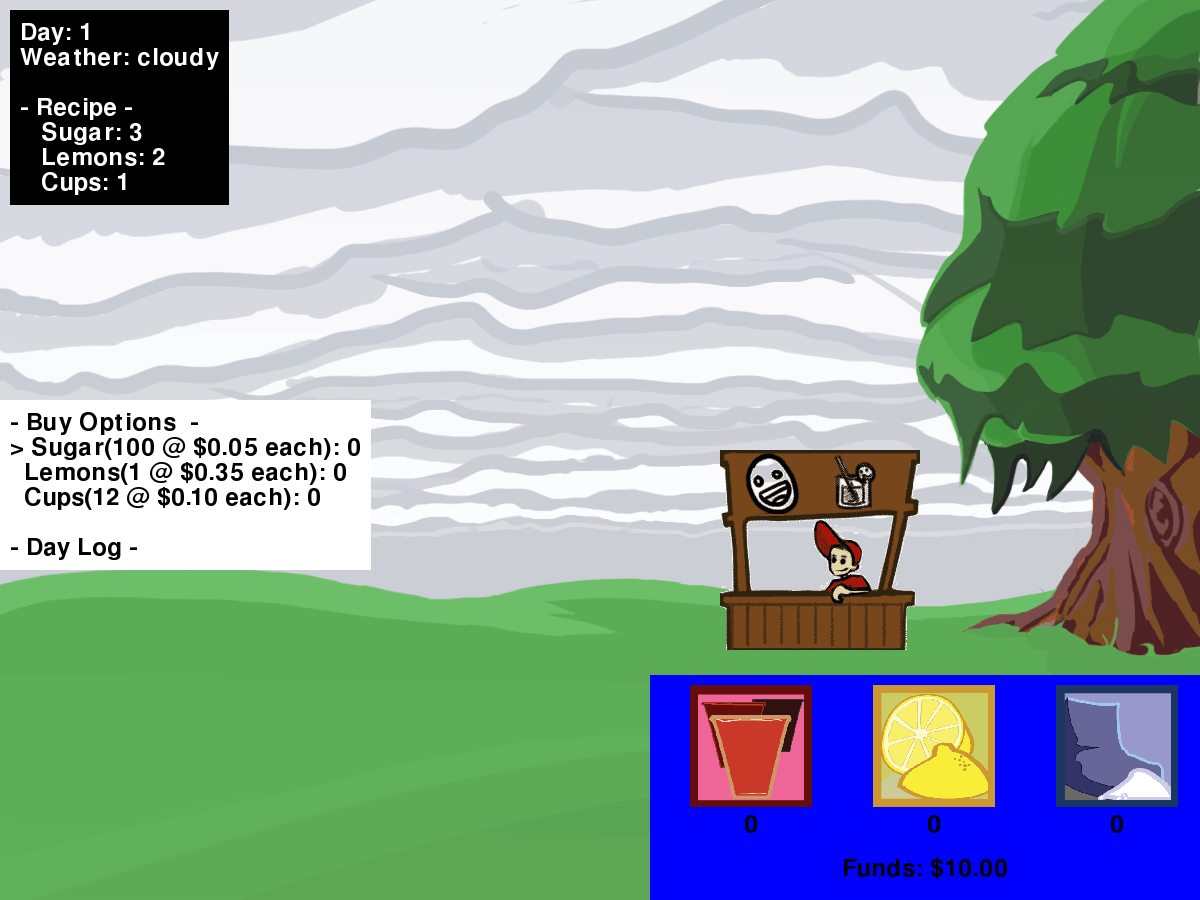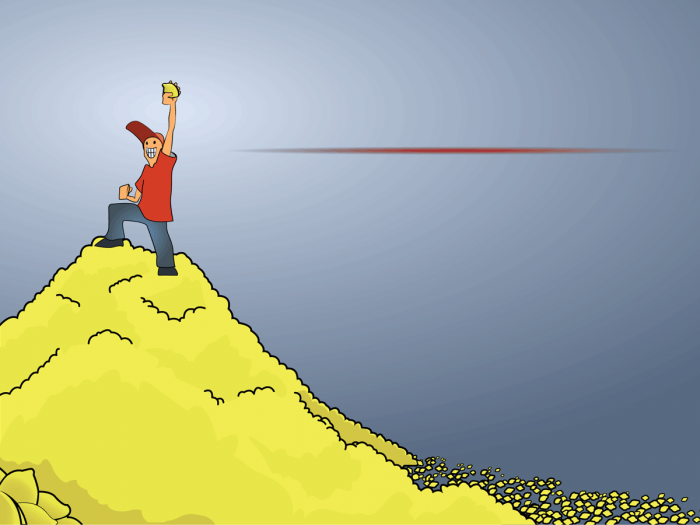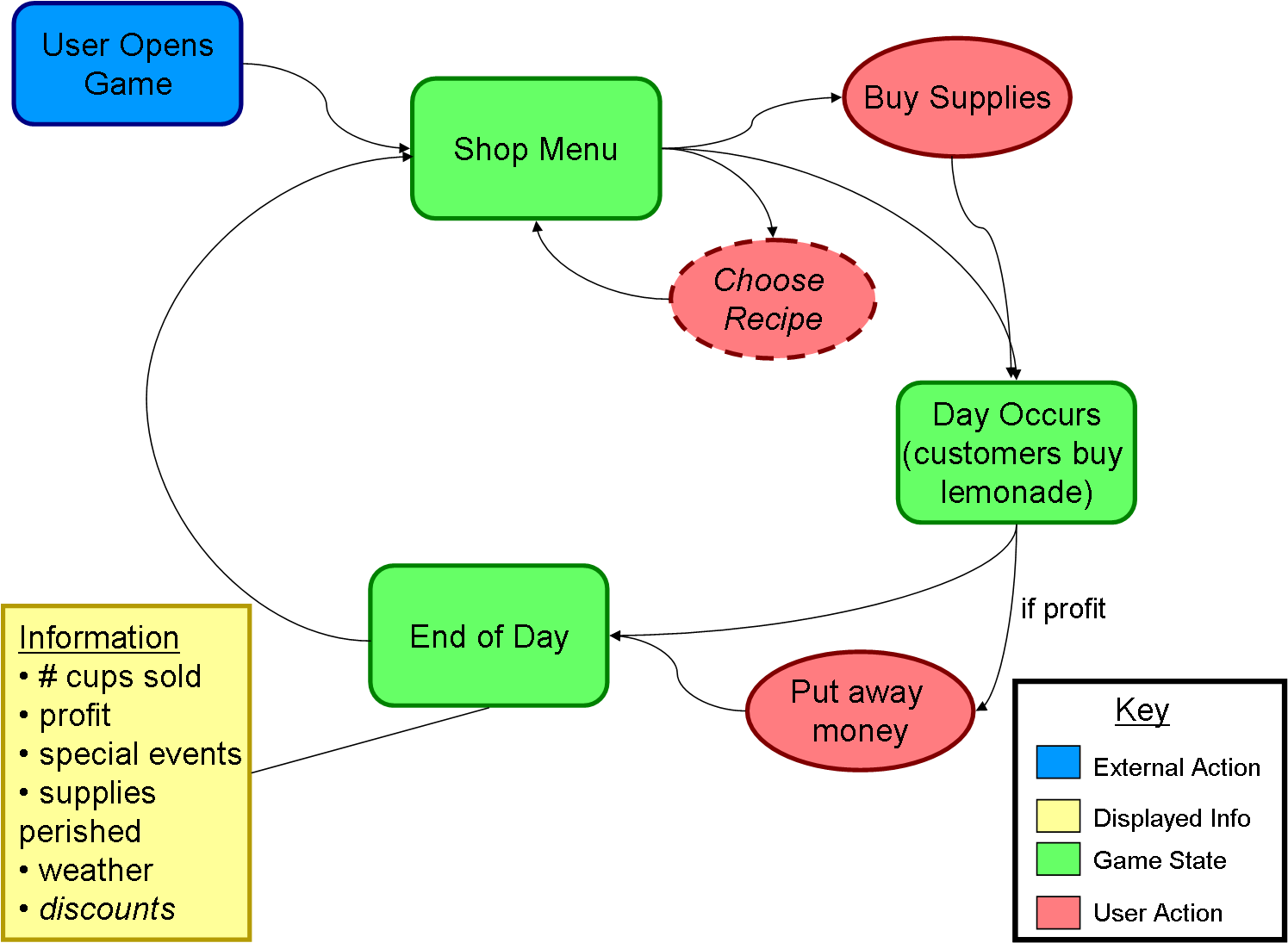Lemonade Stand
Active 2010 - Contributors: David Wilson, Jenn Kotler, JT Mengel, Justin Lewis, Nathaniel Case, Sarah Wagner, Tatica Leandro
This game was downloaded over 13,000+ times for the One Laptop per Child XO laptop Sugar desktop environment.
This is your basic “Lemonade Stand” style game, where the player manages a lemonade stand (or similar store) and tries to make as much money as possible. The game is designed to incorporate money and fractional math skills to teach basic operations.
Overview
Lemonade Stand (or more likely, Insert produce here stand) is a collaboration project at RIT. It is designed to test children on fractions, working with money, estimation, and other math topics. While our time restraints limit the extent to which we can implement features, the current goal is a feature-complete program even if lacking in graphics. We plan on having a system based on buying and selling commodities and an eventual season based economy.
The largest and most complex task of the project will be the introduction of a basic AI to handle the economy, more graphics, and localization. We are planning on introducing the game with a generic currency model while being easy to replace for regional types.
Lemonade Stand is taking a short hiatus following the 2.1 release to identify the next series of features to implement for the next release.
Releases
- 1.0.0: initial release
- 1.1.0: Updated game code
- 2.0, XO Release 4: Game Rewrite
- 2.1, XO Release 5: Beautification Project
Educational standards
See the standards on the curriculum chart.
- 4.N.4: Select, use, and explain models to relate common fractions and mixed numbers (1/2, 1/3, 1/4, 1/5, 1/6, 1/8, 1/10, 1/12, and 11/2), find equivalent fractions, mixed numbers, and decimals, and order fractions
- 4.N.6: Exhibit an understanding of the base ten number system by reading, naming, and writing decimals between 0 and 1 up to the hundredths
- 4.N.10: Select and use appropriate operations (addition, subtraction, multiplication, and division) to solve problems, including those involving money
- 4.D.3: Construct, draw conclusions, and make predictions from various representations of data sets, including tables, bar graphs, pictographs, line graphs, line plots, and tallies
Resources and links
Team members
- Current:
- Nathaniel Case
- Justin Lewis
- Sarah Wagner
- JT Mengel
- Historical:
- Mitchell DeMarco
- Anthony King
- Anthony Lubrani
- Jonathan Sanger
- Steven Schoenfeld
- Community contributors:



